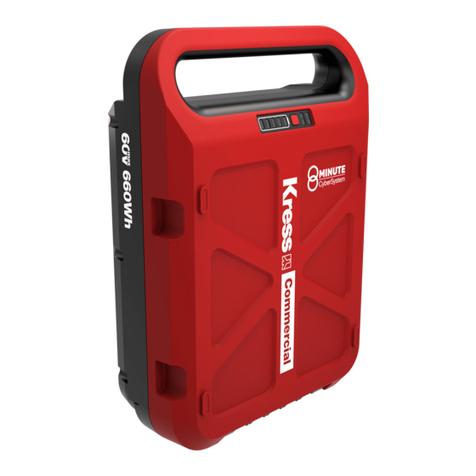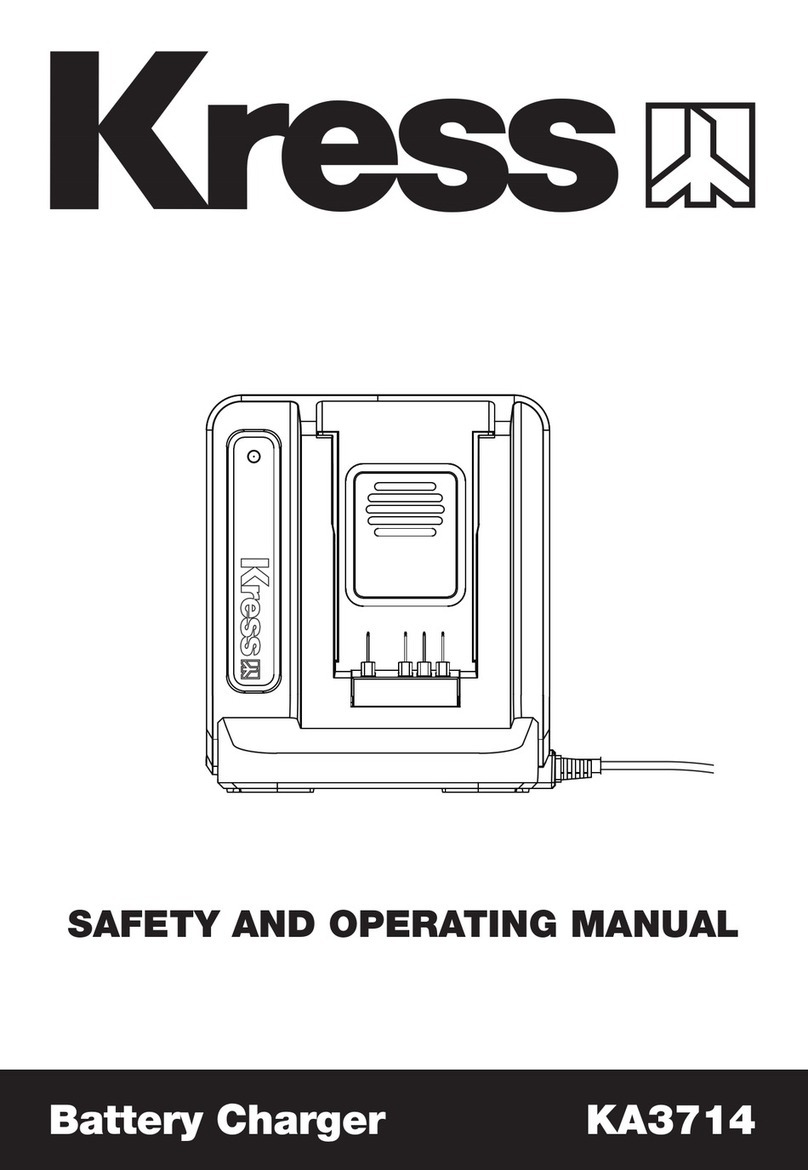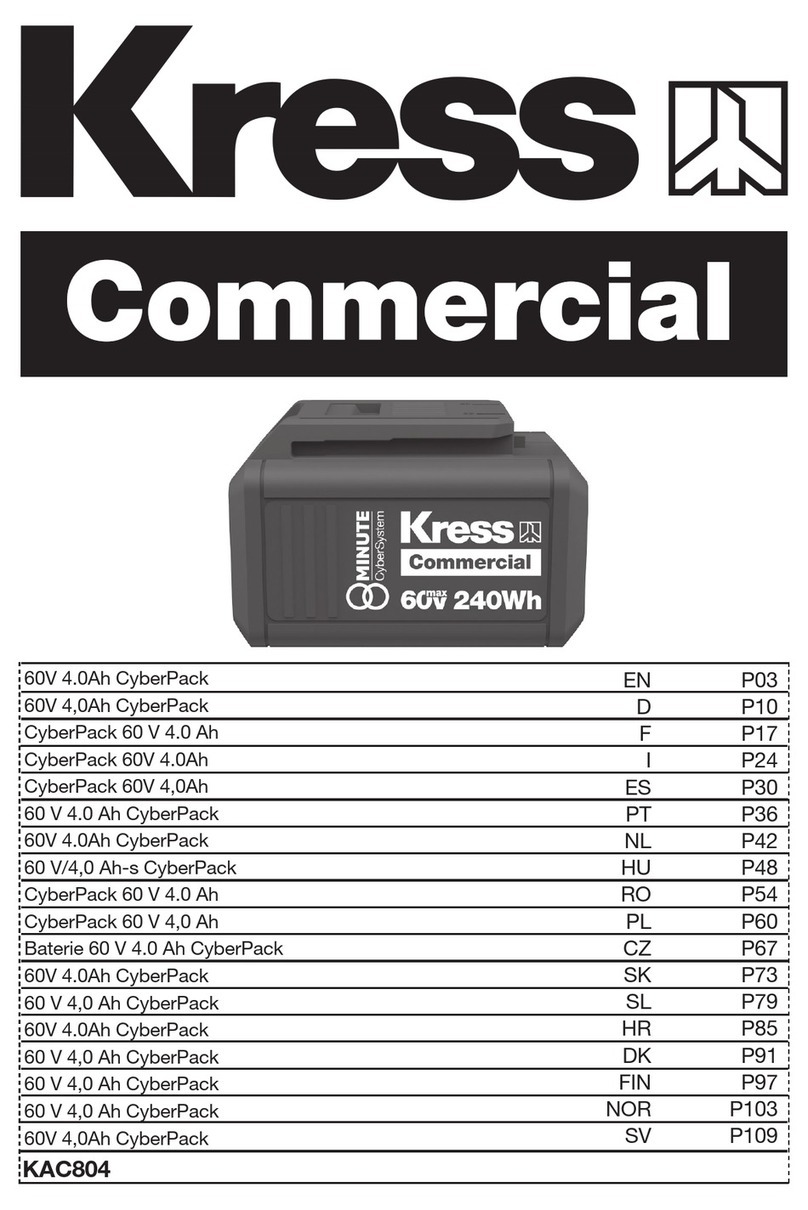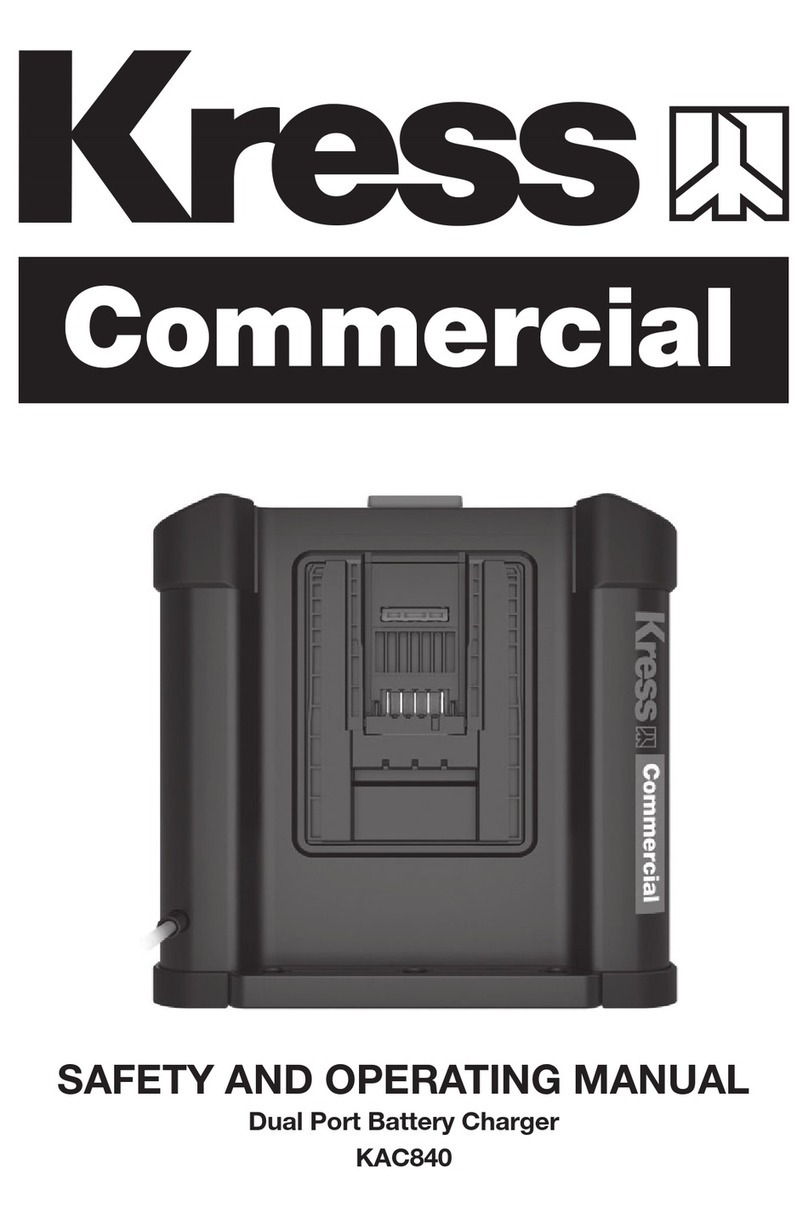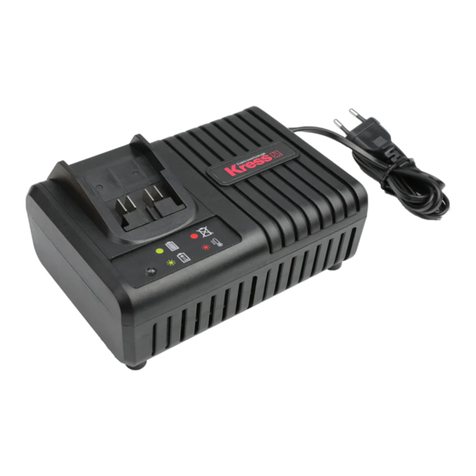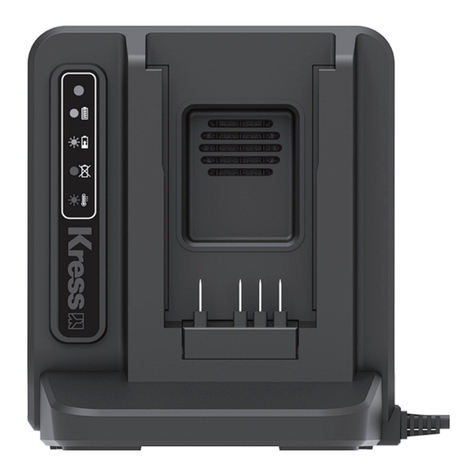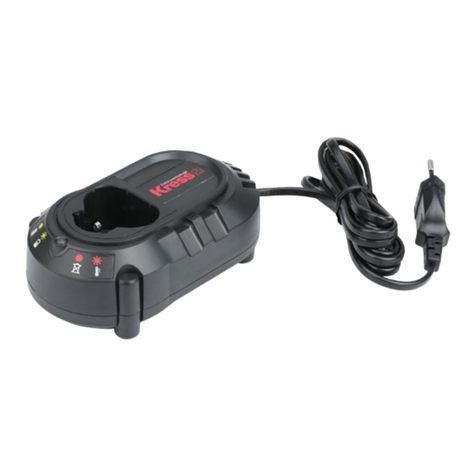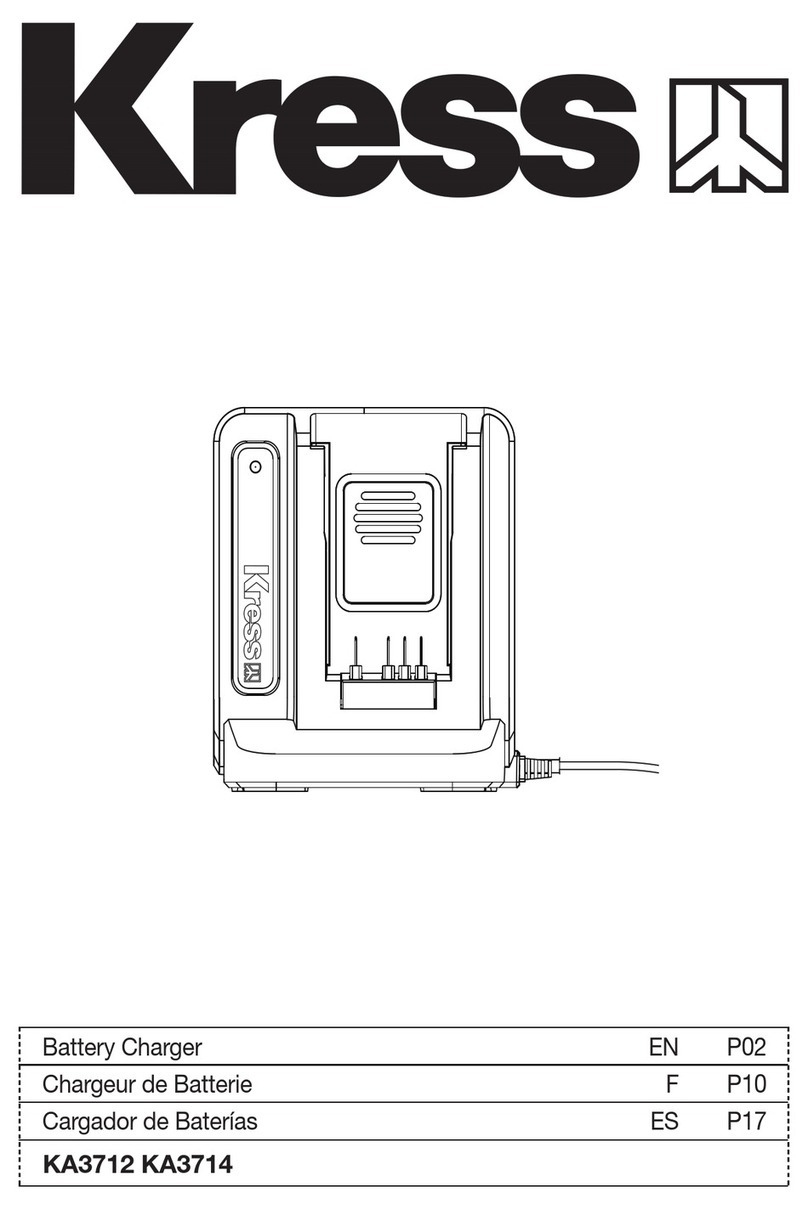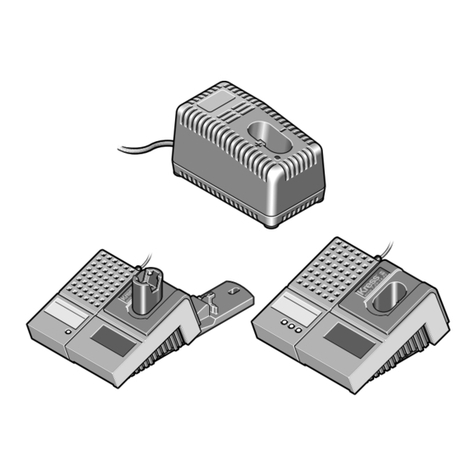
9
F
PROCEDURE DE
CHARGEMENT
REMARQUE: Avant d’utiliser cet outil,
assurez-vous de lire attentivement le manuel
d’utilisation.
INSTRUCTIONS DE CHARGE
1. BLOC-PILE EN RECHARGE
AVERTISSEMENT:
Le chargeur et la batterie
sont spéciquement conçus pour être utilisés
ensemble, ne faites pas usage d’autres articles.
N’insérez jamais d’objets métalliques et ne laissez
pas non plus de tels objets entrer en contact avec les
bornes de la batterie/chargeur. Ceci est dangereux et
entraînera une panne du chargeur.
2. AVANT D’UTILISER VOTRE PONCEUSE
Votre bloc-pile n’est PAS CHARGÉ. If faut donc le
rechargeur une fois avant d’utiliser l’outil. Lorsque
vous chargez un nouveau bloc-batteries ou un bloc-
batteries qui n'a pas été utilisé pendant une longue
période, il se peut qu'il n'atteigne pas sa pleine
charge avant d'avoir été déchargé complètement en
cours d'utilisation et rechargé plusieurs fois.
3. COMMENT RECHARGEUR LE BLOC-PILE
PROCEDURE DE CHARGEMENT
1) Brancher le chargeur sur une prise appropriée.
2) Faites glisser le bloc-batteries dans le chargeur,
le voyant vert clignote pour indiquer que le
processus de charge a commencé.
3) Après environ 1 à 2 heures de charge, le voyant
reste vert sans clignoter. Le pack est maintenant
complètement chargé, débranchez le chargeur
et retirez le pack de batteries.
AVERTISSEMENT:
Lorsque la charge de la batterie s’épuise
après une utilisation continue ou l’exposition directe
à la lumière du soleil ou à une source de chaleur,
laisser la batterie se refroidir avant la recharge pour
atteindre la charge complète.
INDICATEUR DE CHARGEMENT
Ce chargeur est destiné à détecter certains
problèmes susceptibles de survenir avec les
blocs-piles. Les voyants lumineux indiquent des
problèmes (voir tableau ci-dessous). Dans ce cas,
insérez un nouveau bloc-pile pour déterminer si le
chargeur fonctionne. Si la nouvelle batterie se charge
correctement, cela signie que le bloc d’origine est
défectueux et qu’il doit être retourné à un centre de
service ou à un centre de recyclage. Si le nouveau
bloc-pile pose le même problème que le bloc-pile
d’origine, faites tester le chargeur dans un centre de
service agréé.
Lumière clignote-
ment ON/
OFF É tat
Rouge Allumé Batterie défectueuse
Rouge
lignotant ---------- Délai chaud/froid
Vert Allumé Batterie pleine
Vert clignotant
---------- Batterie en charge
DÉLAI POUR BLOC-BATTERIES CHAUD/FROID
Ce chargeur est doté d'une fonction de retardement
du bloc-batteries CHAUD/FROID. Lorsque le
chargeur détecte un bloc-batteries trop chaud
ou trop froid, il lance automatiquement un délai
pour bloc-batteries CHAUD/FROID (le voyant
rouge clignote) et suspend la charge jusqu'à
ce que le bloc-batteries ait atteint la bonne
température. Le processus de charge commence
alors automatiquement (le voyant vert clignote en
continu). Cette fonction garantit une durée de vie
maximale du bloc-batteries.
BLOC-BATTERIES DÉFECTUEUX
Ce chargeur détectera un bloc-batteries faible.
Lorsqu'un bloc-batteries faible est inséré dans
le chargeur, ce dernier tente de le réparer. Ce
processus durera environ 30 minutes (le voyant
vert clignote). Lorsque la réparation est terminée, le
chargeur commence automatiquement à charger le
bloc-batteries à la capacité maximale possible (le
voyant vert clignote continuellement). Si la lumière
reste allumée en rouge, le bloc-batteries est mort.
REMARQUE:
Les blocs-piles réparés
sont encore utilisables, mais il ne faut pas
s’attendre à ce qu’ils fonctionnent aussi bien
que les blocs-piles neufs.
REMARQUES IMPORTANTES RELATIVES AU
CHARGEMENT
1. Pour un nouveau bloc-batteries ou un bloc-
batteries qui a été stocké pendant un certain
temps, veuillez recharger le bloc-batteries avant
de l'utiliser.
2. Il est possible de prolonger la durée de vie et
d’améliorer la performance en chargeant le
bloc-pile à une température de l’air ambient
comprise entre 65 0F et 75 0F (18 et 240C). Ne
chargez pas le bloc-pile à une température
de l’air ambient inférieure à 40 0F (4.5 0C) ou

